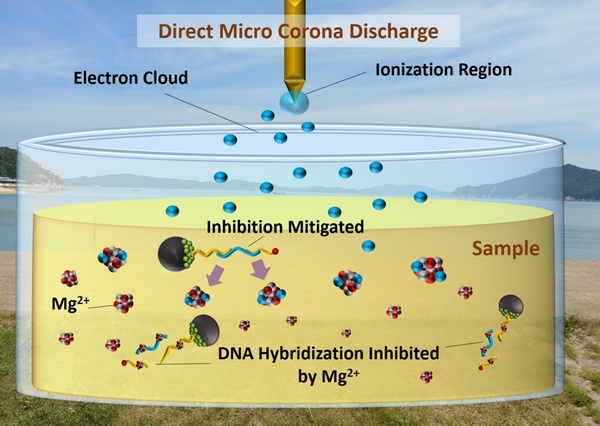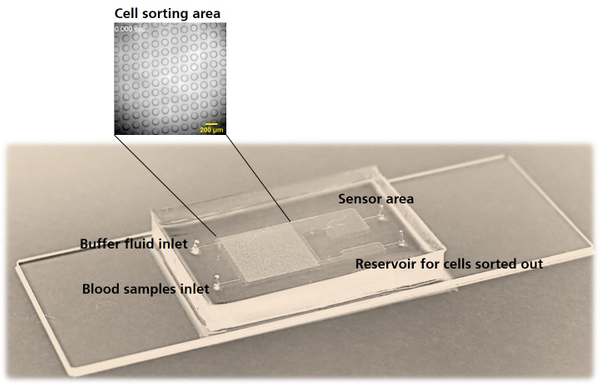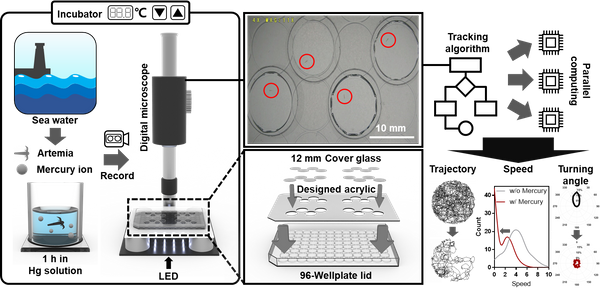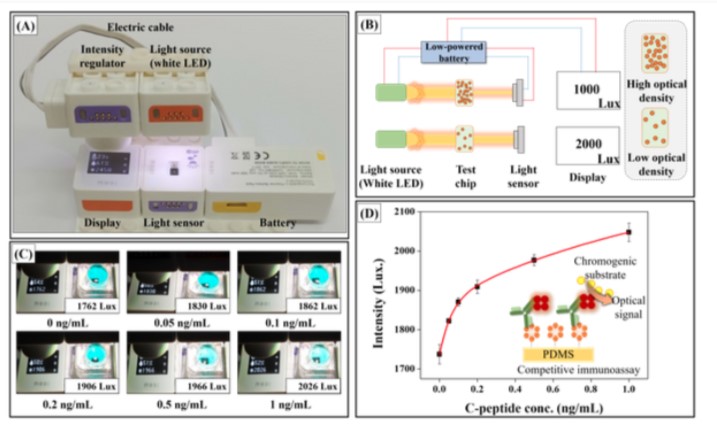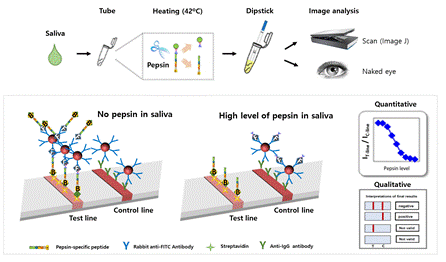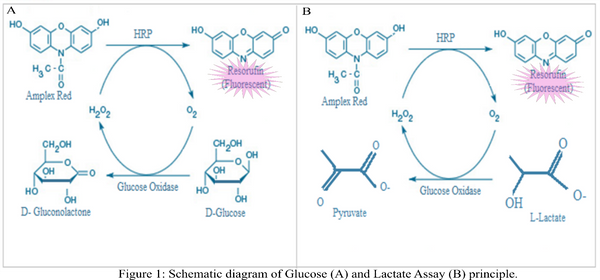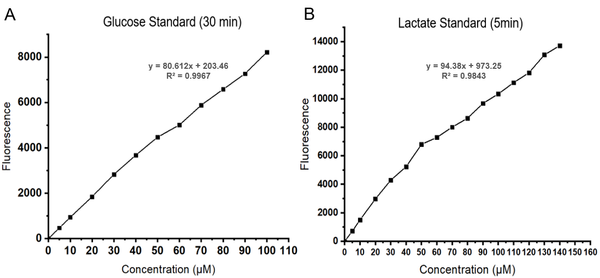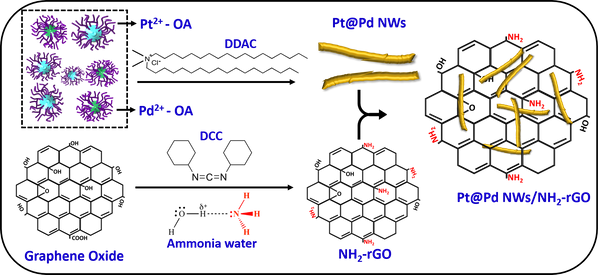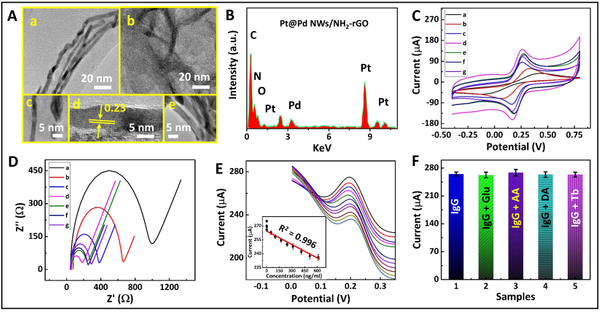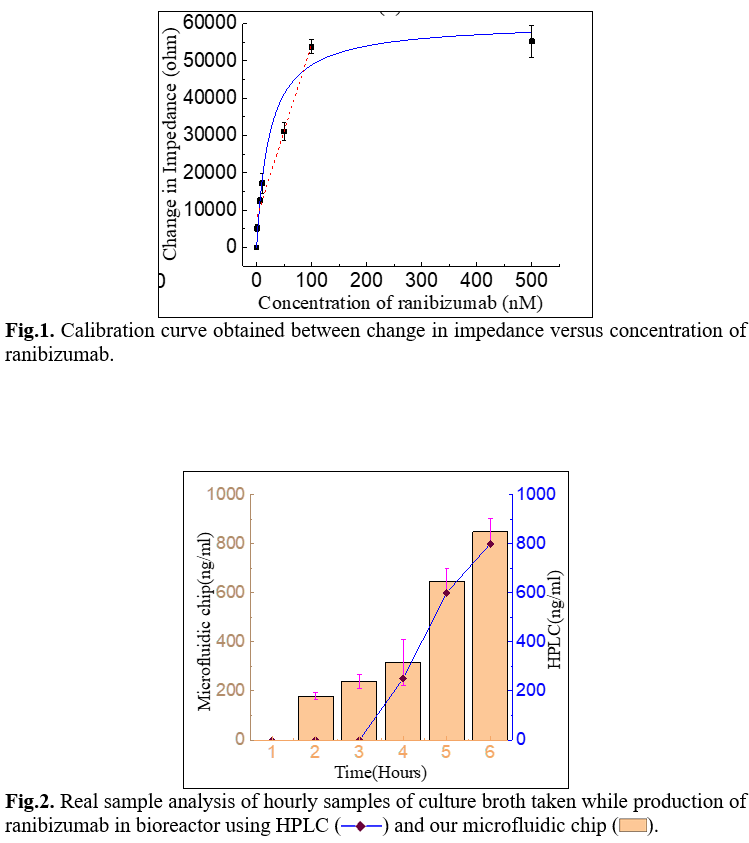Abstract
Graphene field effect transistors (FETs) are considered to be advantageous for use as sensors due to their excellent electrical and mechanical properties and simple structure. Sensing mechanisms that measuring the potential difference due to changes in species or concentration of ions in the electrolyte are known to be suitable for immunoaffinity (IA) biosensor applications. However, most graphene IA biosensor studies use pyrenebutanoic acid, succinimidyl ester (PSE) as a linker for antibody binding on graphene surface, but PSE has limited binding strength and charge transfer due to its molecular structure. In this work, we provide edge defects instead of linkers to enhance the sensitivity of the detection of tau and phosphorylated tau proteins, biomarkers in Alzheimer’s disease. Unsaturated carbon bonds at the graphene line defects provide a advantageous antibody binding sites even in the absence of linkers, and help improve sensitivity because they are directly connected.
The control group (antibodies binding with linker, Fig 1(a)) and defective graphene group (prepatterned graphene without linker, Fig 1(b)) measure the electrical properties in the electrolyte-gate structure using a series of tau and phosphorylated tau protein solutions. The defective graphene group generated defects by patterning the transferred graphene instead of using a linker in the antibody immobilizing process. The characteristics of biosensor was evaluated by the shift of the lowest conductance point, called as Dirac point, for a series of tau and phosphorylated tau protein concentration changes.
Graphene purchased from ‘Graphene Supermarket’ and the biosensor was fabricated using a well-known process as shown in Fig 1(c) [1]. Since an electrical double layer is formed at the graphene-electrolyte interface, the current versus gate voltage (ISD-VG) curves of the graphene are more sensitive to the electrolyte gating than the back gating of the silicon substrate (Fig 1(d)). As shown in Fig. 2(a), the fabricated graphene glucose sensor shows a negative shift of the Dirac point with a glucose concentration increase. The defective graphene glucose biosensor without enzyme (Fig 2(b)) shows about 32% higher change than the control graphene biosensor structure with increasing glucose concentration (-40 mV/mM versus -53 mV/mM) [2].
This finding suggests that defective graphene biosensors can provide stronger immobilization of antibodies. These bonds can be greatly affected by the position and the density of antibody can be reduced, but it is advantageous in terms of the sensitivity of the graphene biosensor because it is directly connected to the graphene itself.
Fig 1. (a) Schematic images of graphene biosensors (a-c). The antibodies were binding on graphene surface using PSE as linker (a) or directly connected to the graphene edge defect (b). During the measurement, electrolyte was poured in to the PDMS well and reference electrode (Ag/AgCl) was inserted. (d) Current versus gate voltage curves of back gate (black) and electrolyte gate (red). In electrolyte gate, the Dirac point appears around 0.25 V, but in the back gate it is not visible in the range shown.
Fig 2. Dirac point shift with a series of glucose concentration changes (a, b). The graphene biosensors show sensitivity of -40 for normal graphene with PSE linker (a) and -53 mV/mM for defective graphene without PSE linker, respectively.
Reference
[1] S.S. Kwon et al., ACS Applied Materials & Interfaces, 8, 2016, 834-839
[2] S.S. Kwon et al., ACS Applied Materials & Interfaces, 9, 2017, 14216-14221
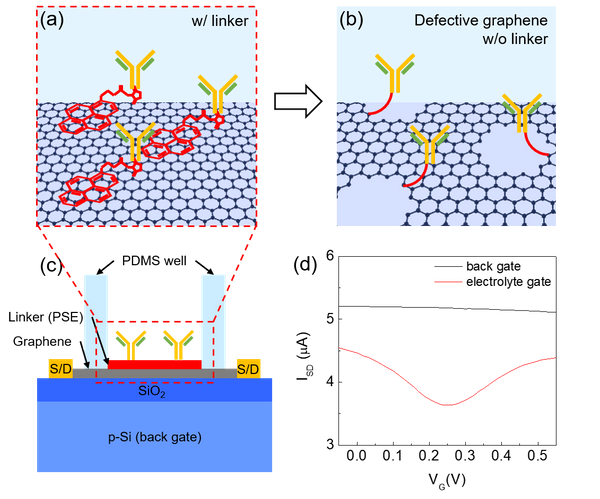
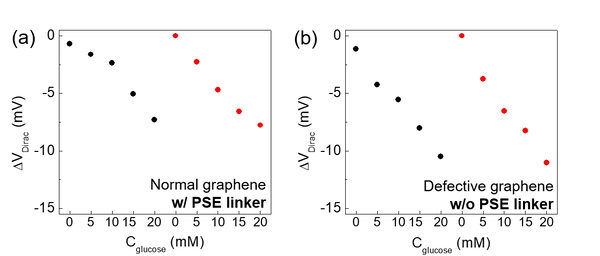
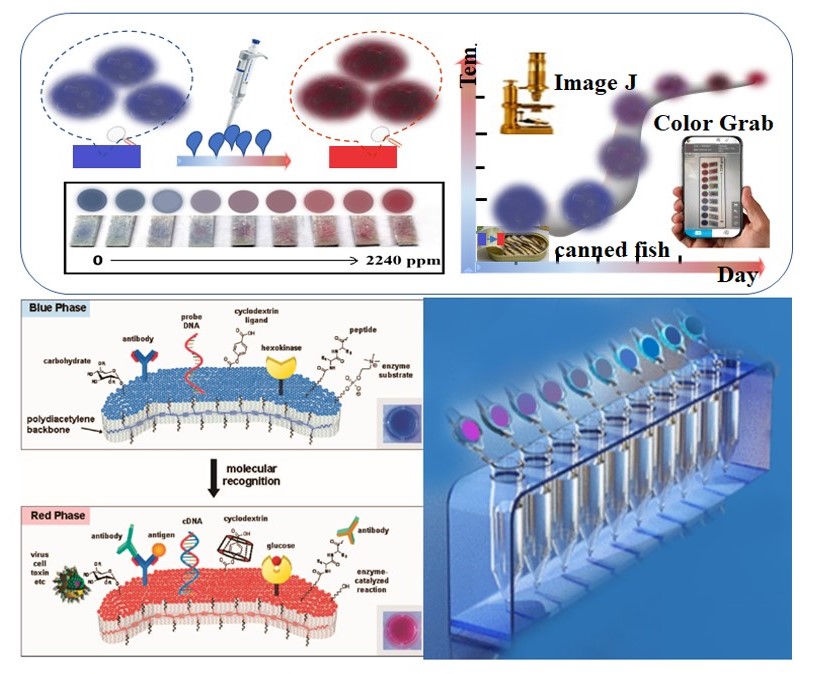
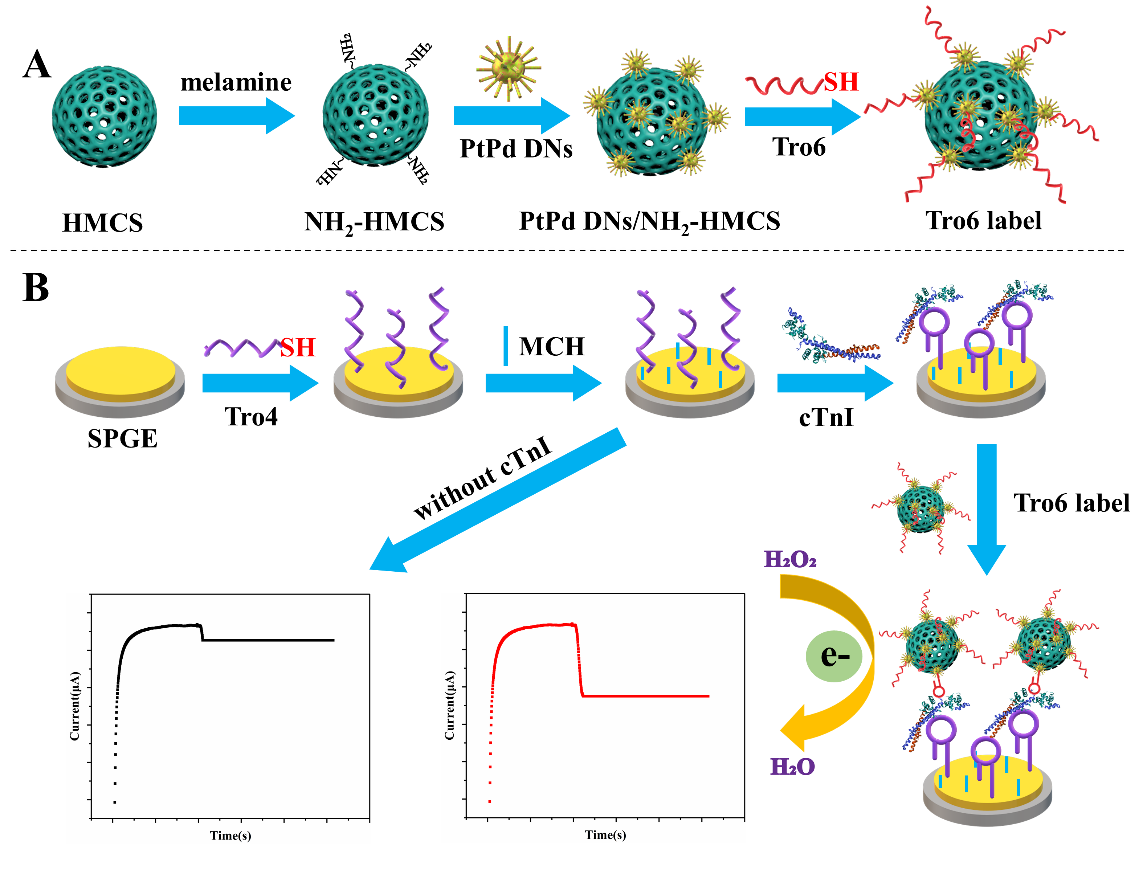

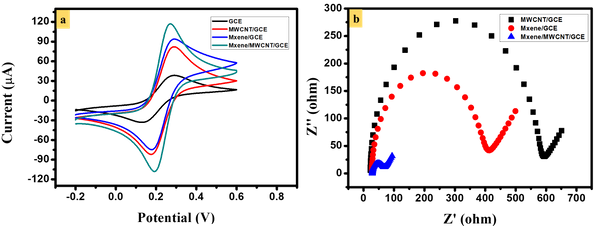
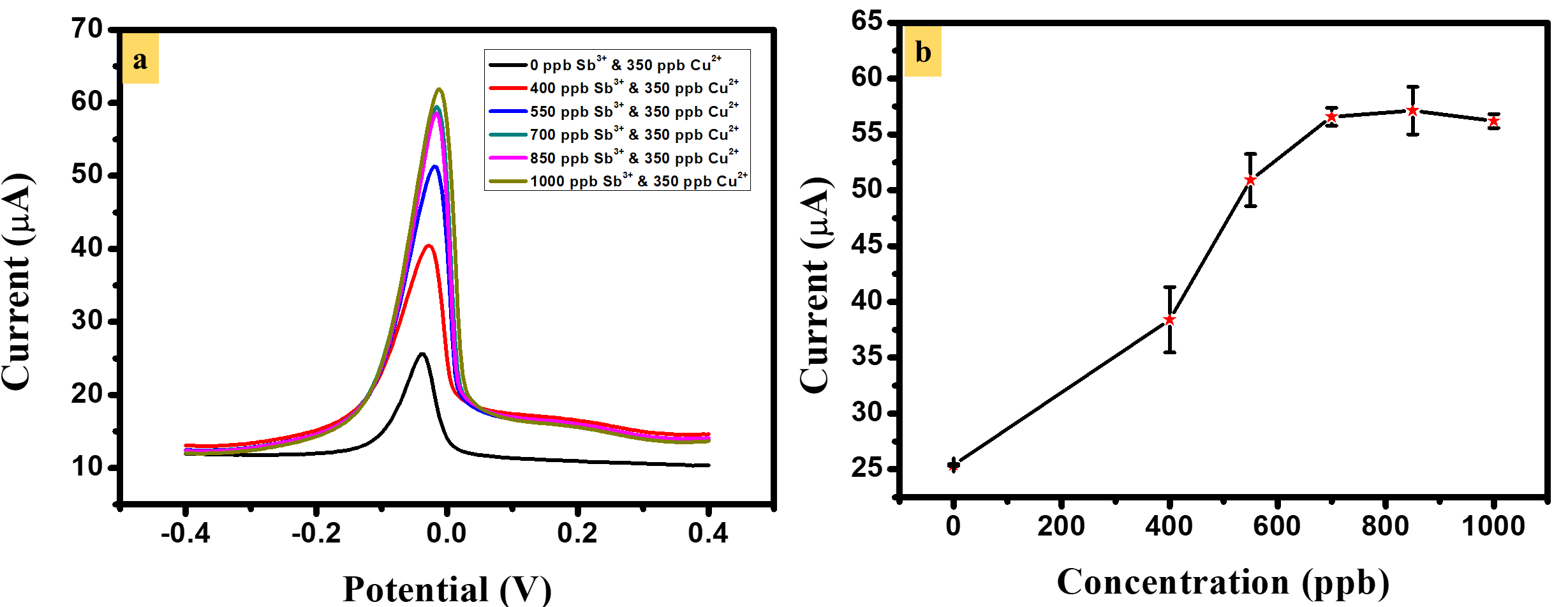


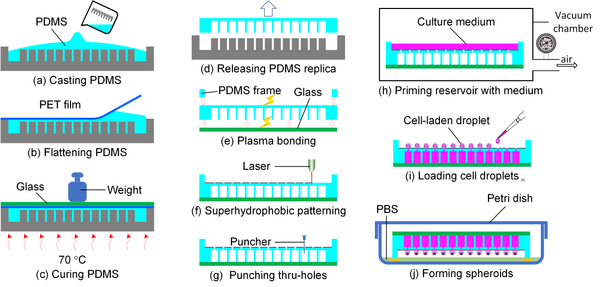
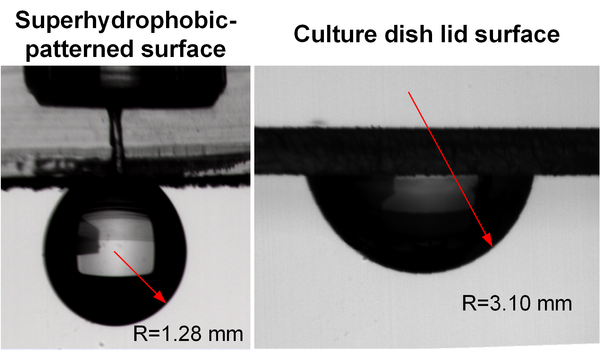

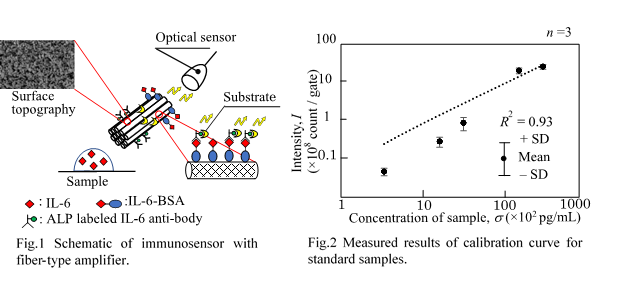

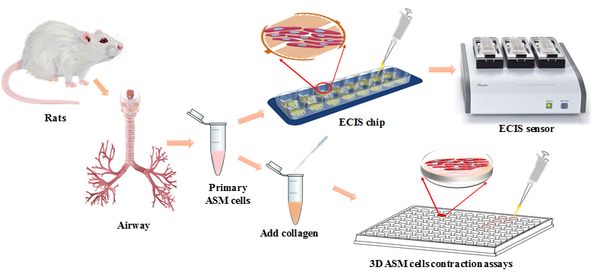

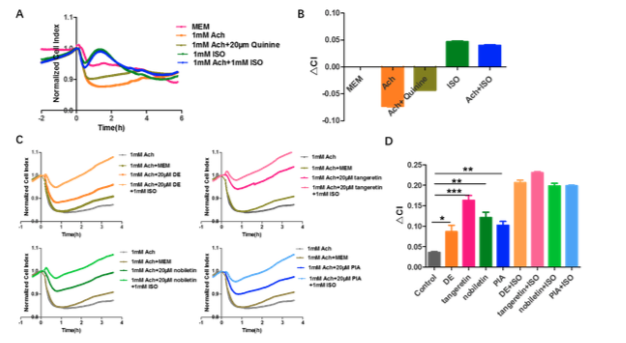

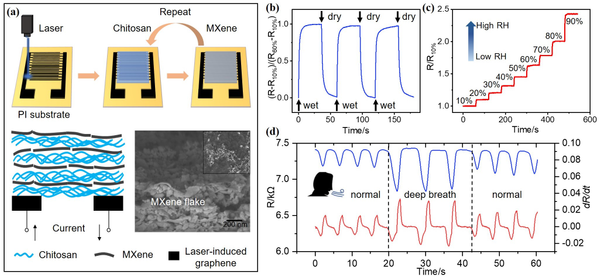

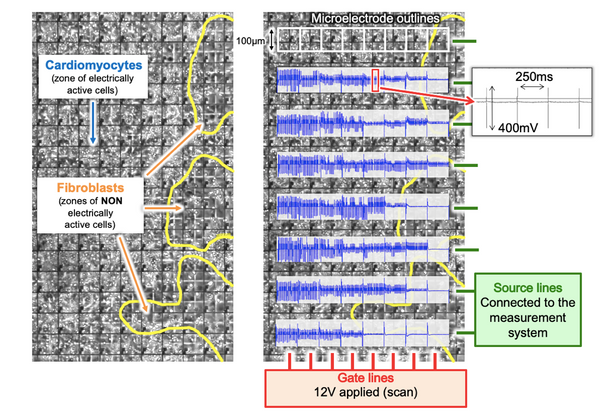
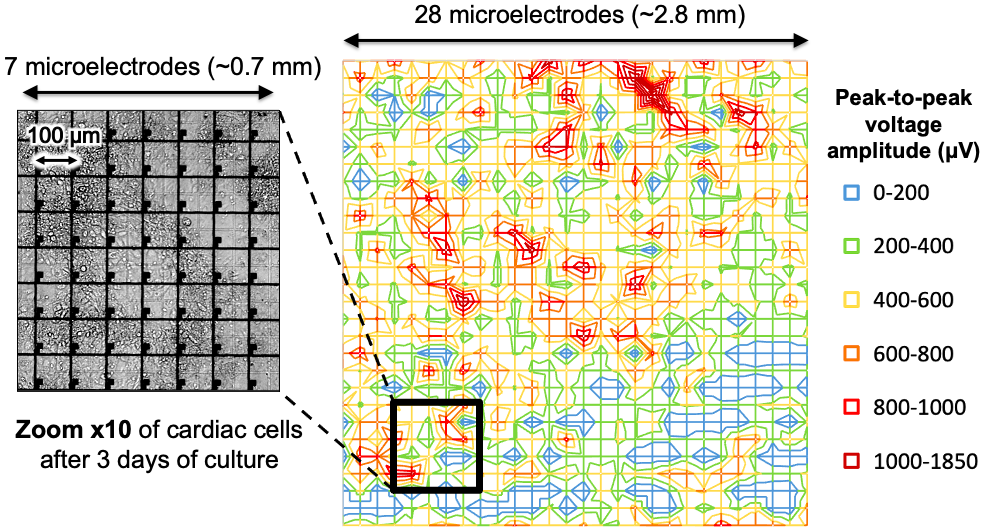
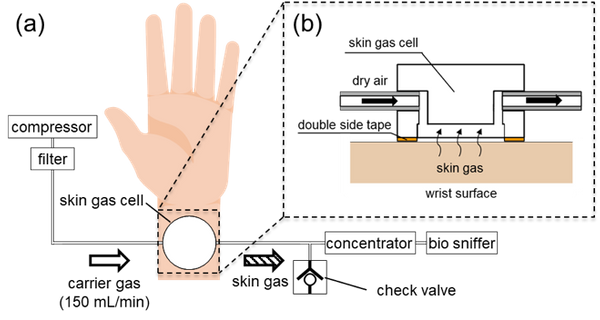


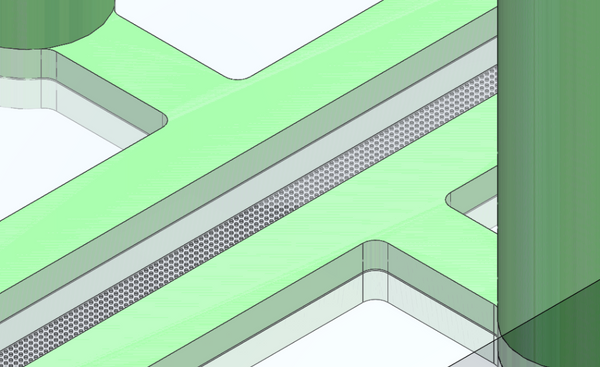
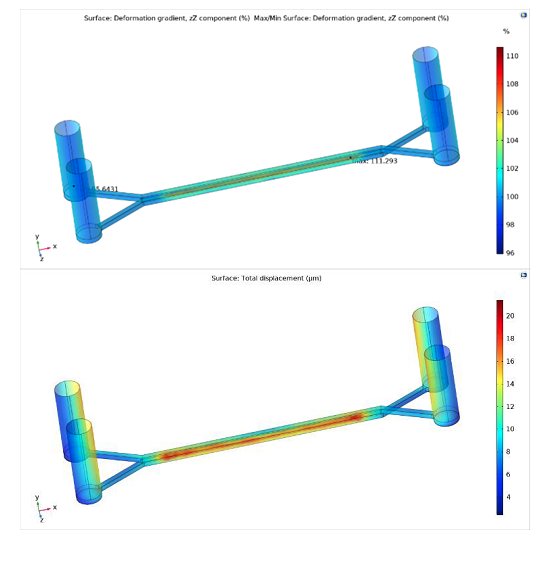



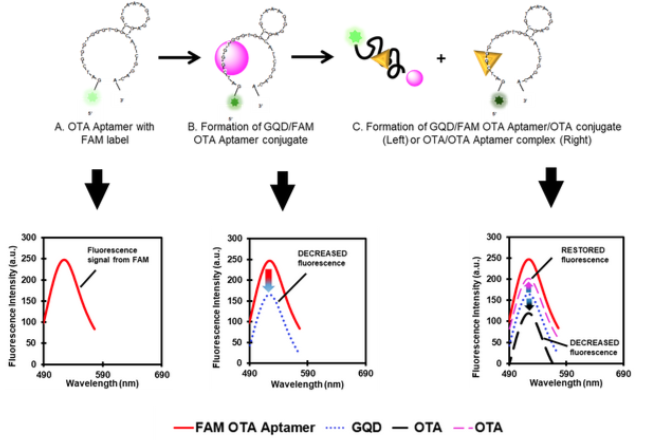
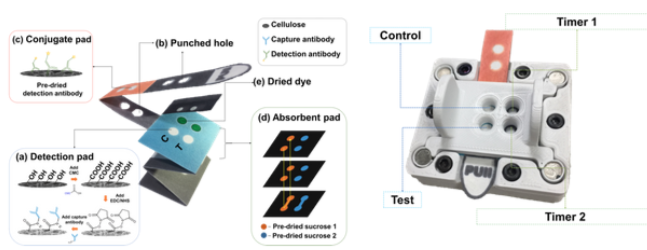

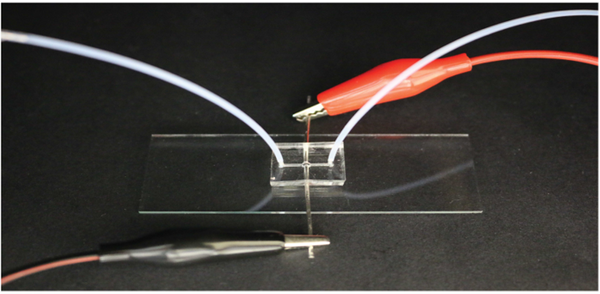

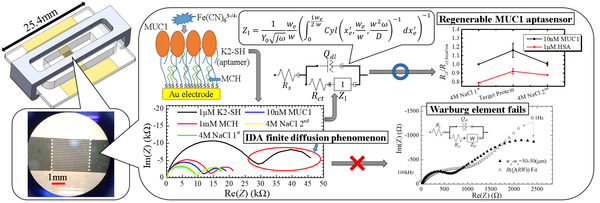 Interdigitated array (IDA) electrode-based impedimetric aptasensors are emerging devices, with several combined advantages (e.g. sensitive, robust, miniaturized … etc.) facilitating them to thrive in a variety of applications. However, as IDA electrodes exhibit finite diffusion, the electrochemical impedance spectroscopy (EIS) data of such aptasensors lacks an appropriate circuit element for characterizing the low frequency region. In this study, impedimetric aptasensors for detection of tumor marker MUC1 are fabricated based on IDA chips using an element specialized for parameterizing the IDA diffusion impedance. For chip construction, a 3D-printed fixture is used to clip a PDMS microwell onto the IDA electrode. For equivalent circuit fitting, the IDA diffusion element is used for characterizing the diffusion impedance, whereas using a Warburg element would have failed [1]. For MUC1 detection, a novel aptamer (K2 aptamer) selected by our team is used, which its specificity is confirmed using SPR (K2: 7.30±0.62RU and 30mer random ssDNA: 2.90±0.08RU), and Fe(CN)63-/4- does not hinder the binding event of K2 and MUC1. Using the method above, regenerable and selective MUC1 aptasensors using IDA chips are constructed. These low cost, regenerable and miniaturized chips along with their analysis methods have great potential for further medical use and commercialization. (Regenerable thrombin aptasensors are also fabricated and a baseline equation is further derived for quantifying charge transfer resistance (Rct) related to non-specific binding events. A significant proportional change of Rct between detection of 20nM thrombin (ΔRct/Bss = 30.0±7.92%) and 15μM HSA (ΔRct/Bss = 6.20±2.19%) is present, and EIS detection from 1.37~333nM is performed to confirm the binding affinity with a maximum ΔRct/Bss (Bmax) of 55.7% and a dissociation constant (KD) of 18.4nM.)
Interdigitated array (IDA) electrode-based impedimetric aptasensors are emerging devices, with several combined advantages (e.g. sensitive, robust, miniaturized … etc.) facilitating them to thrive in a variety of applications. However, as IDA electrodes exhibit finite diffusion, the electrochemical impedance spectroscopy (EIS) data of such aptasensors lacks an appropriate circuit element for characterizing the low frequency region. In this study, impedimetric aptasensors for detection of tumor marker MUC1 are fabricated based on IDA chips using an element specialized for parameterizing the IDA diffusion impedance. For chip construction, a 3D-printed fixture is used to clip a PDMS microwell onto the IDA electrode. For equivalent circuit fitting, the IDA diffusion element is used for characterizing the diffusion impedance, whereas using a Warburg element would have failed [1]. For MUC1 detection, a novel aptamer (K2 aptamer) selected by our team is used, which its specificity is confirmed using SPR (K2: 7.30±0.62RU and 30mer random ssDNA: 2.90±0.08RU), and Fe(CN)63-/4- does not hinder the binding event of K2 and MUC1. Using the method above, regenerable and selective MUC1 aptasensors using IDA chips are constructed. These low cost, regenerable and miniaturized chips along with their analysis methods have great potential for further medical use and commercialization. (Regenerable thrombin aptasensors are also fabricated and a baseline equation is further derived for quantifying charge transfer resistance (Rct) related to non-specific binding events. A significant proportional change of Rct between detection of 20nM thrombin (ΔRct/Bss = 30.0±7.92%) and 15μM HSA (ΔRct/Bss = 6.20±2.19%) is present, and EIS detection from 1.37~333nM is performed to confirm the binding affinity with a maximum ΔRct/Bss (Bmax) of 55.7% and a dissociation constant (KD) of 18.4nM.)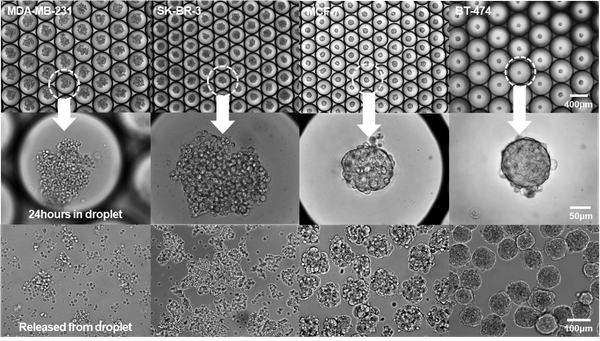
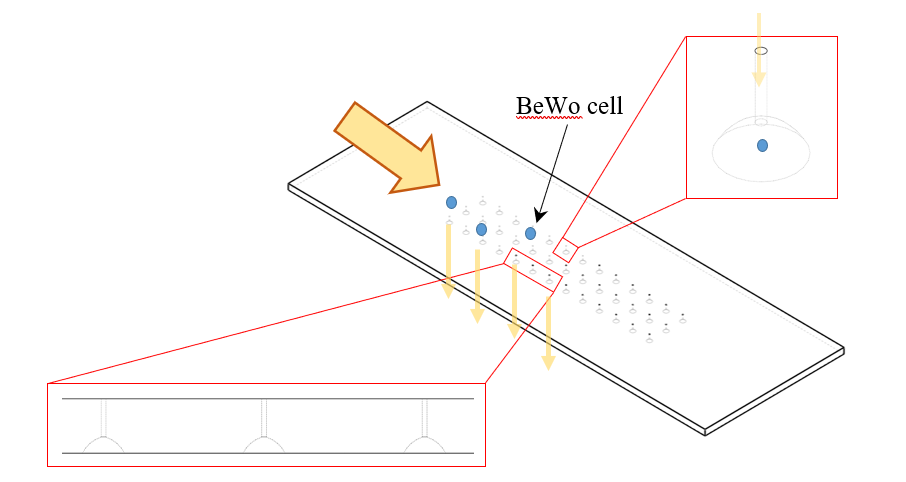
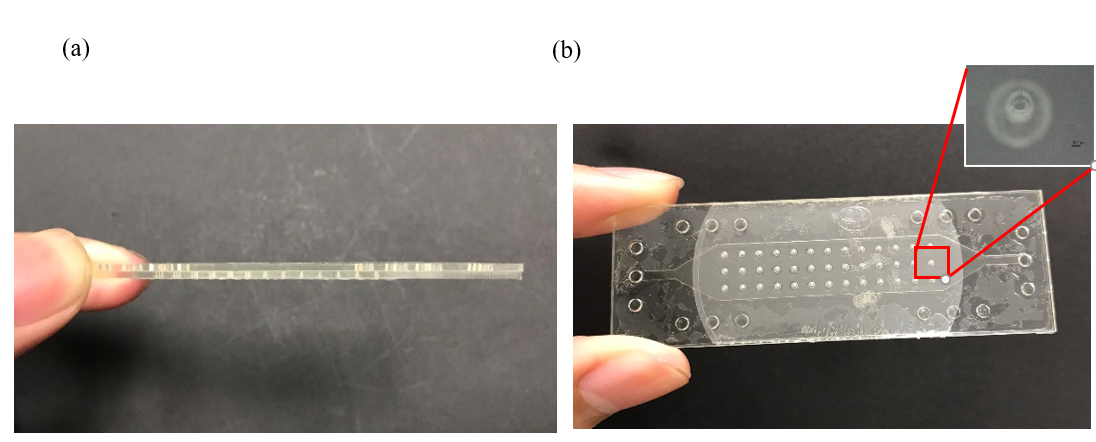
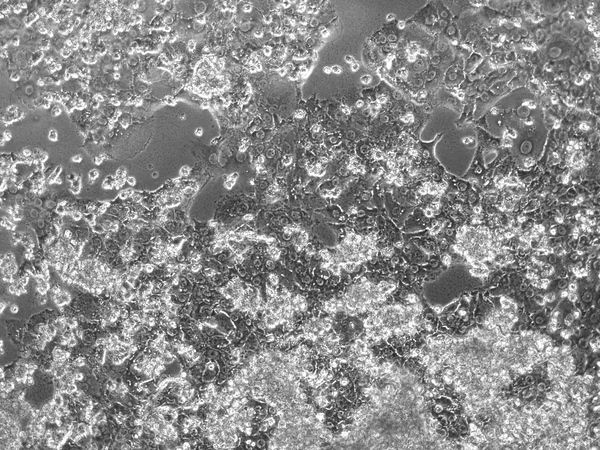
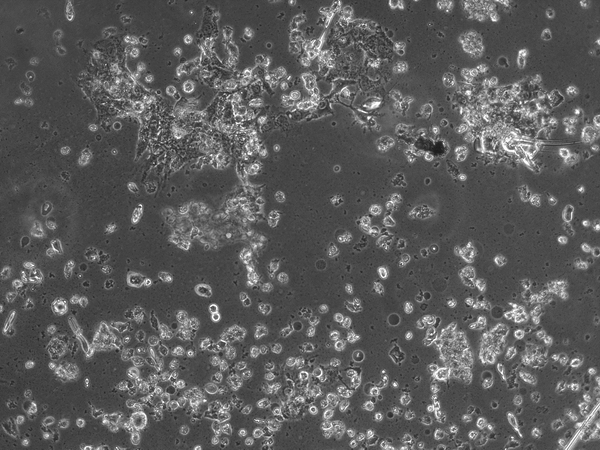
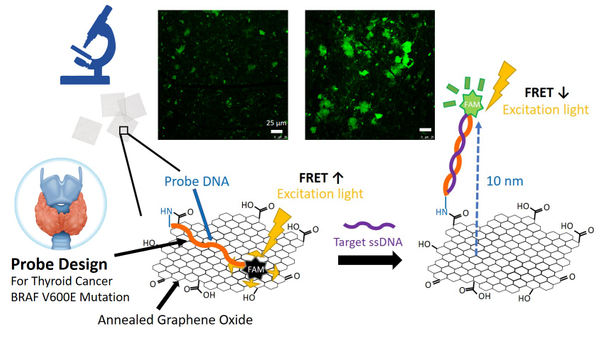
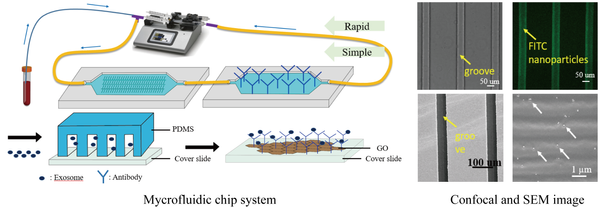
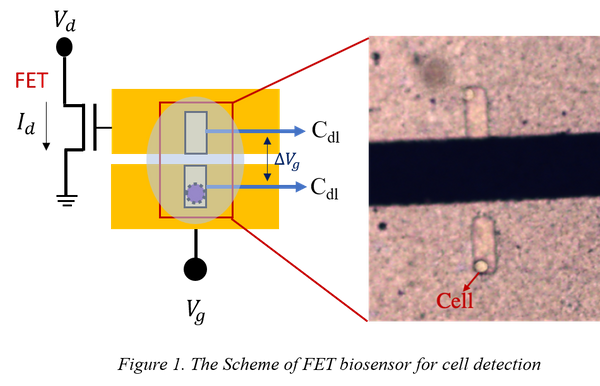
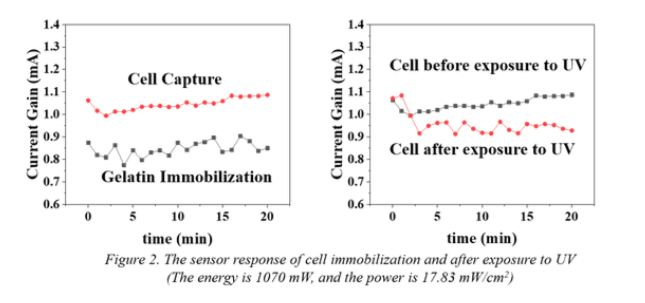
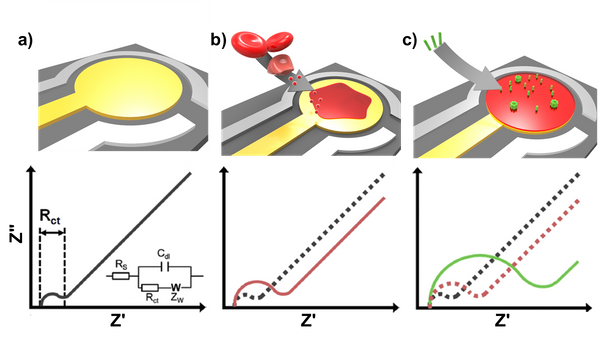

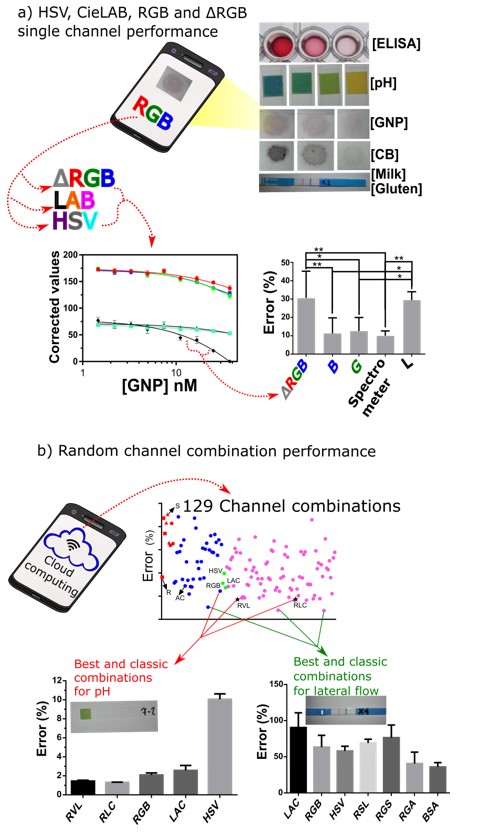

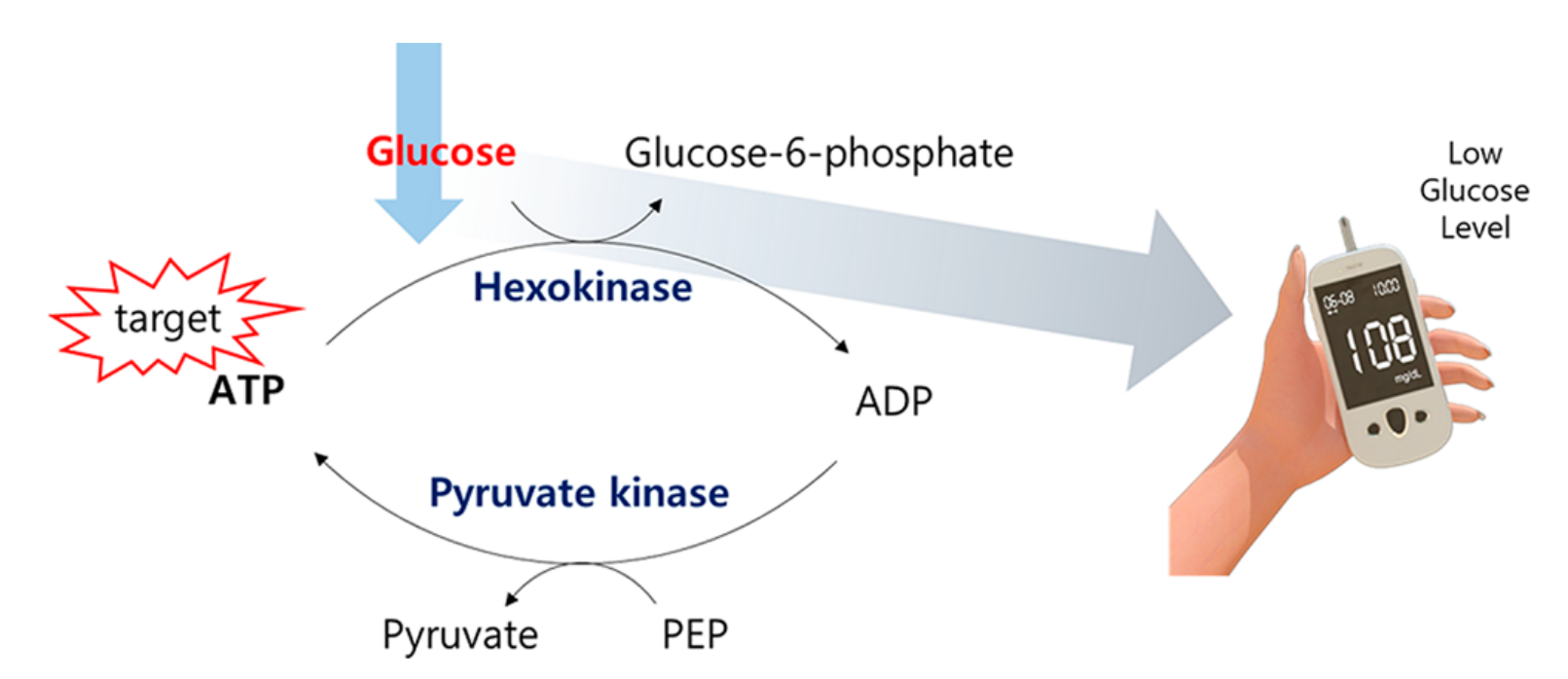


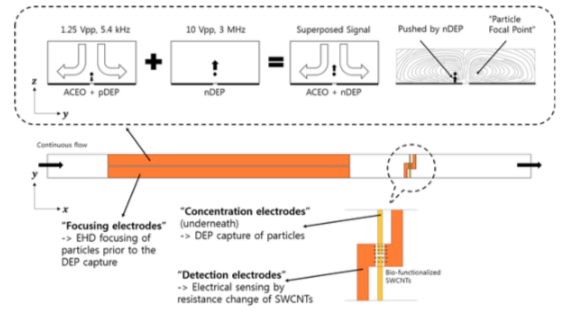


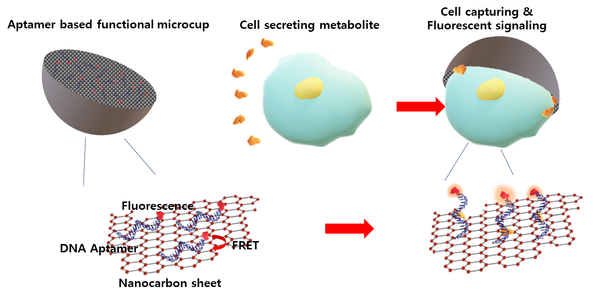 associated protein), which is considered to be potential biomarker for periodontal diseases.
associated protein), which is considered to be potential biomarker for periodontal diseases.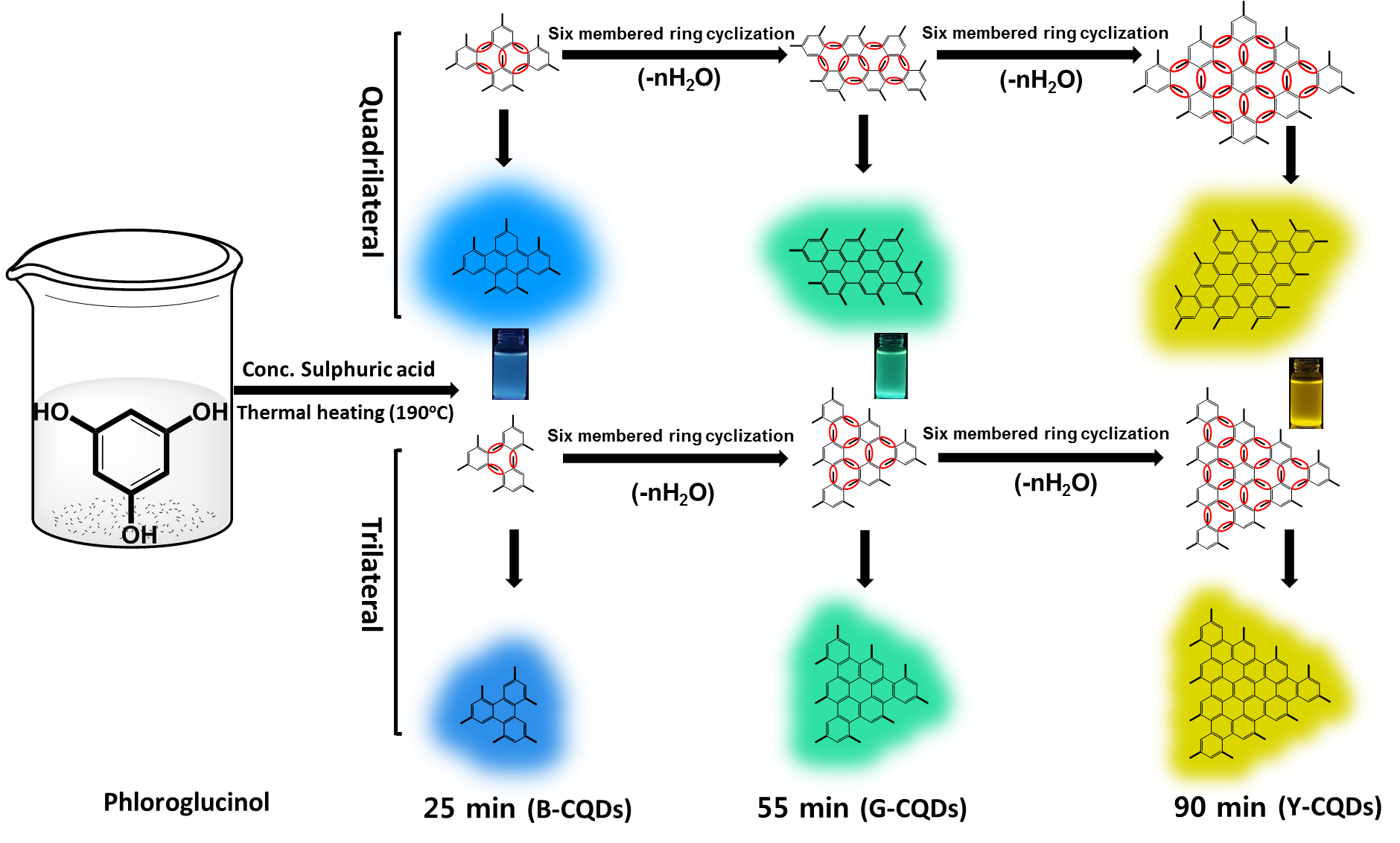
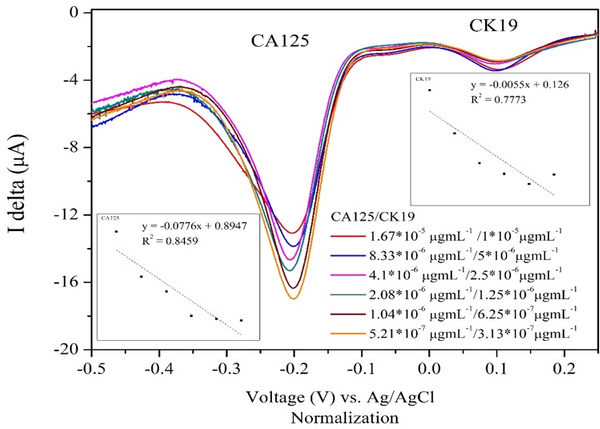

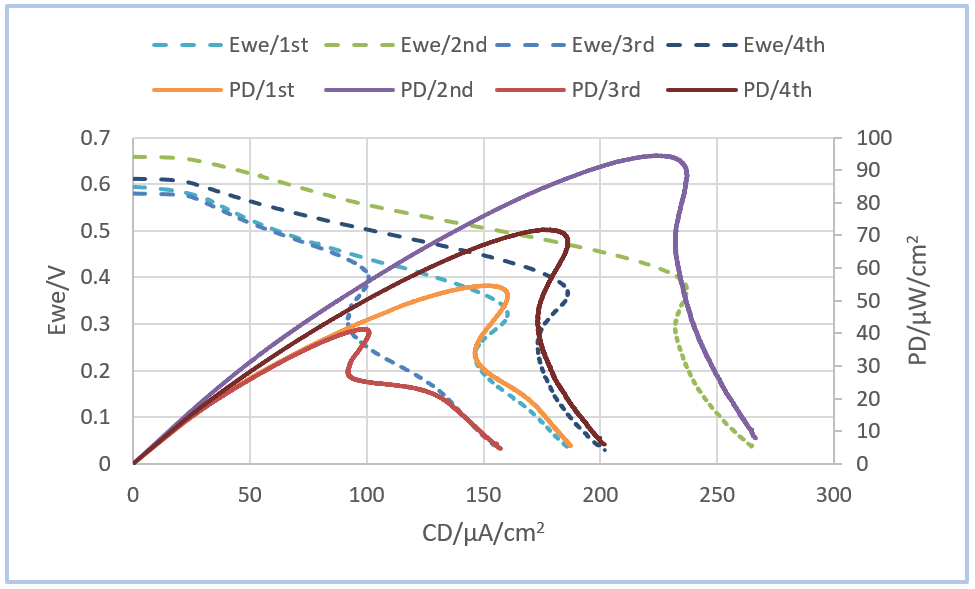
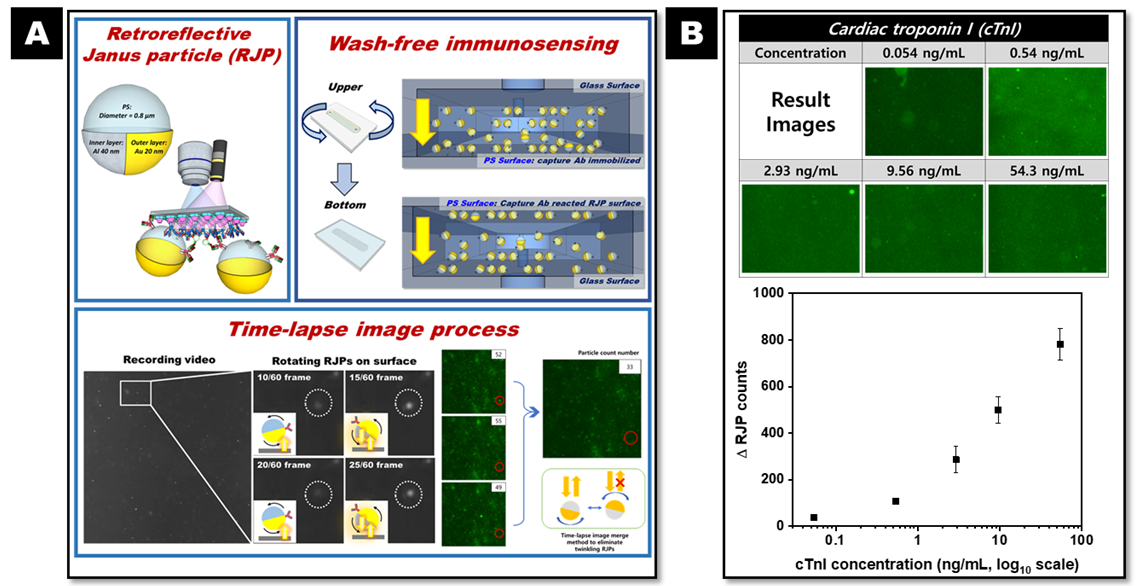
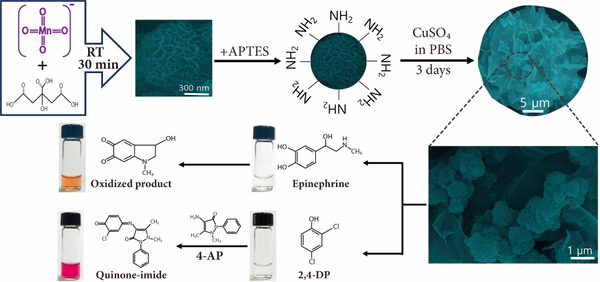
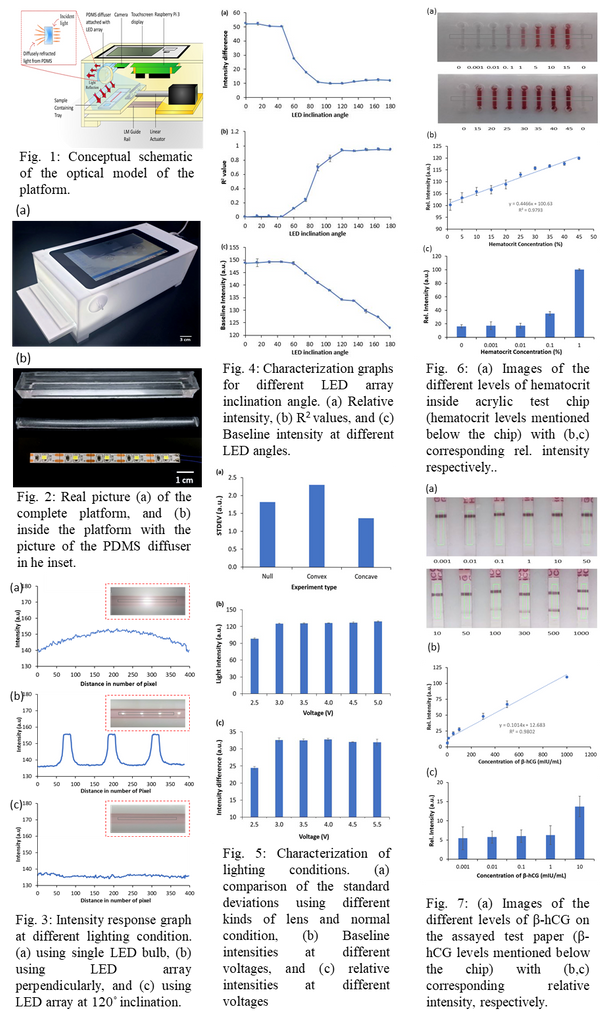

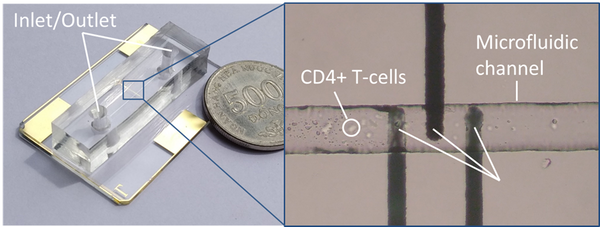
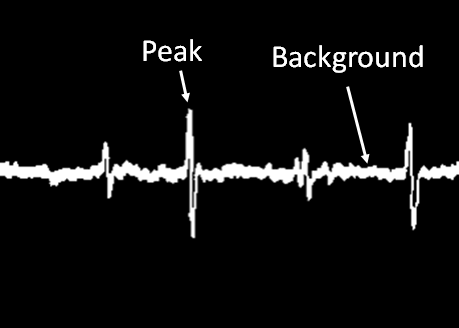


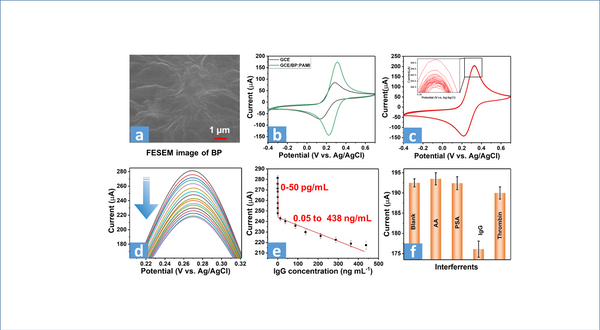



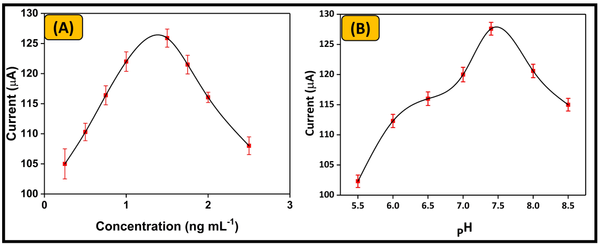
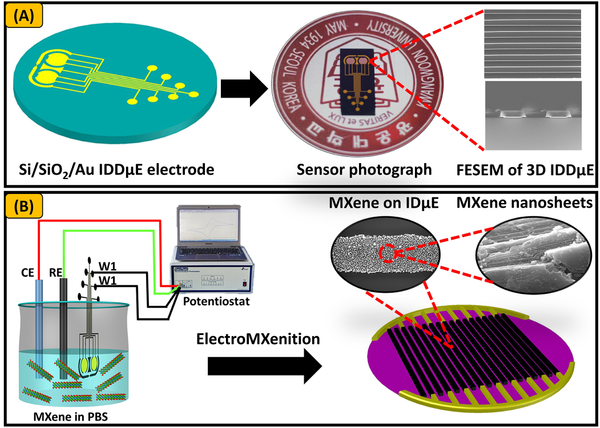
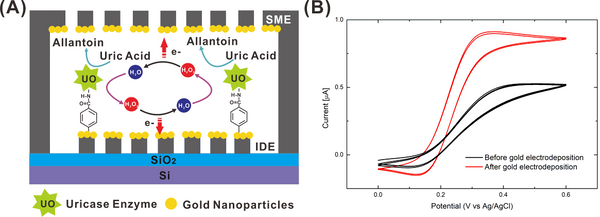

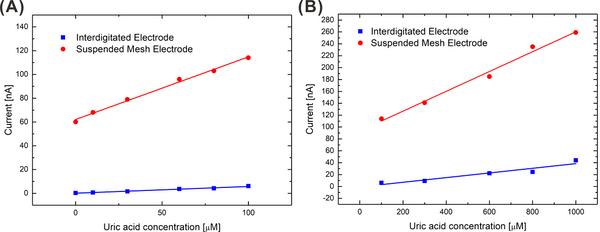
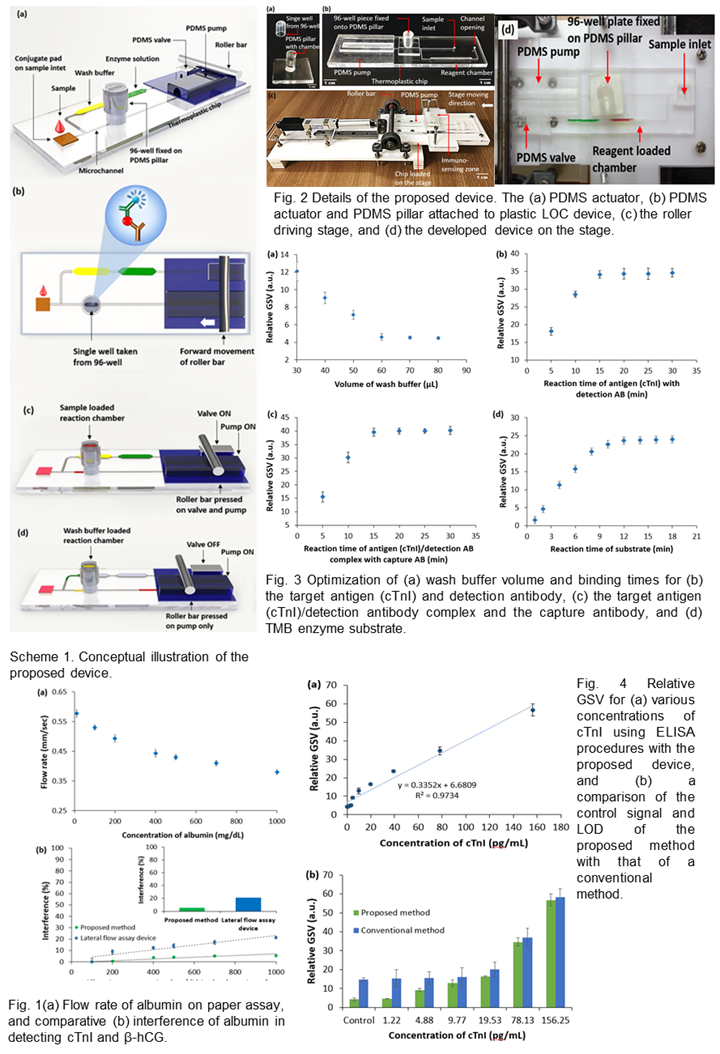

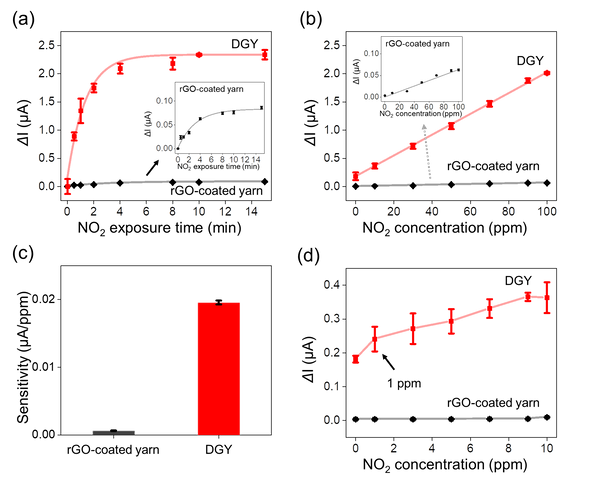
 Figure 3. Selectivity and mechanical property of the DGY. (a) Normalized responses of the DGY under various gases exposure. (b) Responses of the DGY exposed to relative humidity (20-99 %). Each data point represents triplicate measurements. (c) Reponses of DGY upon repeated bending cycles up to 1000 times. The inset schematic shows a process of one cycle of bending test.
Figure 3. Selectivity and mechanical property of the DGY. (a) Normalized responses of the DGY under various gases exposure. (b) Responses of the DGY exposed to relative humidity (20-99 %). Each data point represents triplicate measurements. (c) Reponses of DGY upon repeated bending cycles up to 1000 times. The inset schematic shows a process of one cycle of bending test. Figure 4. Pratctical application test using DGY. The DGY was exposed to car exhaust; (a) gasoline and (b) diesel. (c) The response of DGY was changed after exposed to each car exhaust.
Figure 4. Pratctical application test using DGY. The DGY was exposed to car exhaust; (a) gasoline and (b) diesel. (c) The response of DGY was changed after exposed to each car exhaust.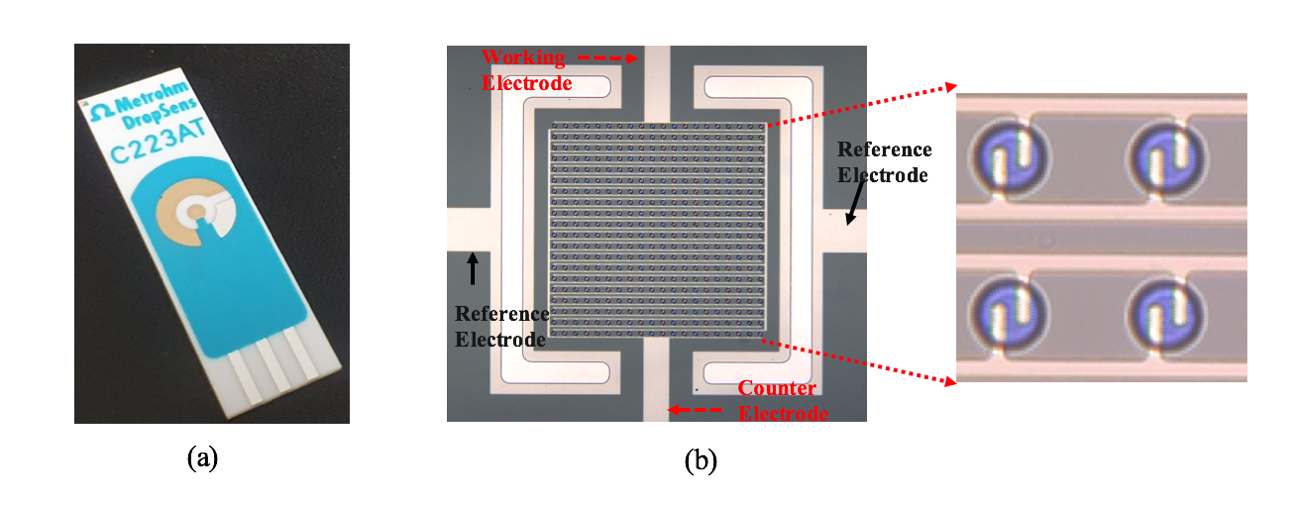
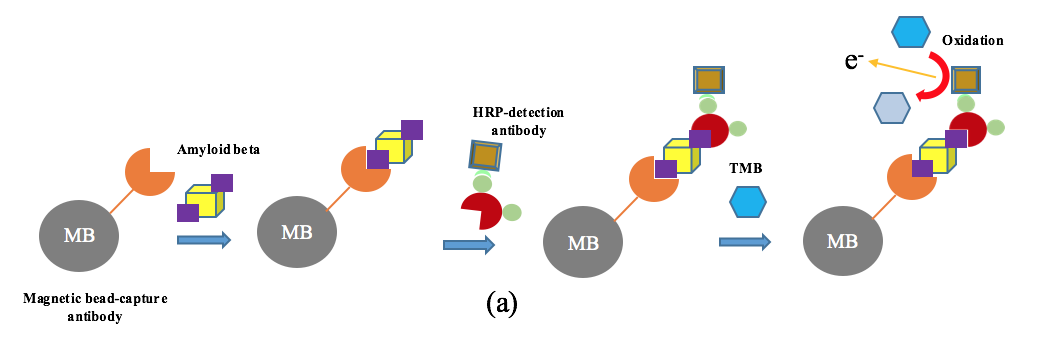
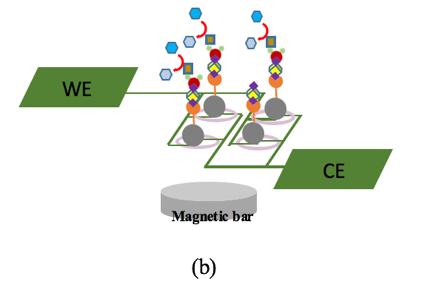



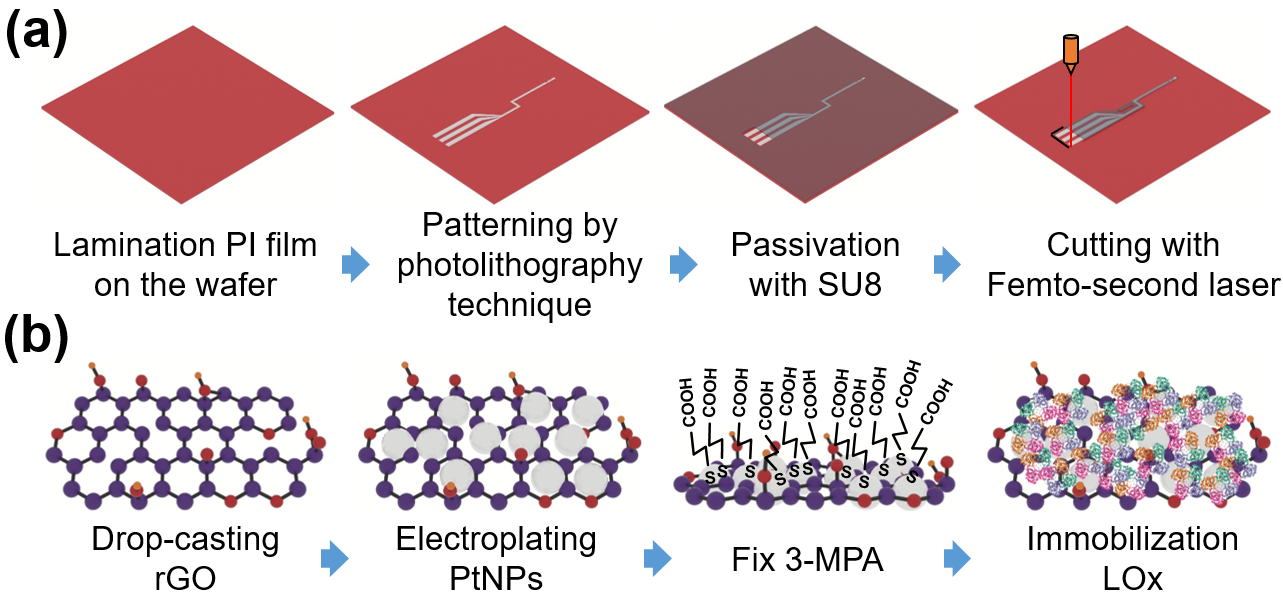
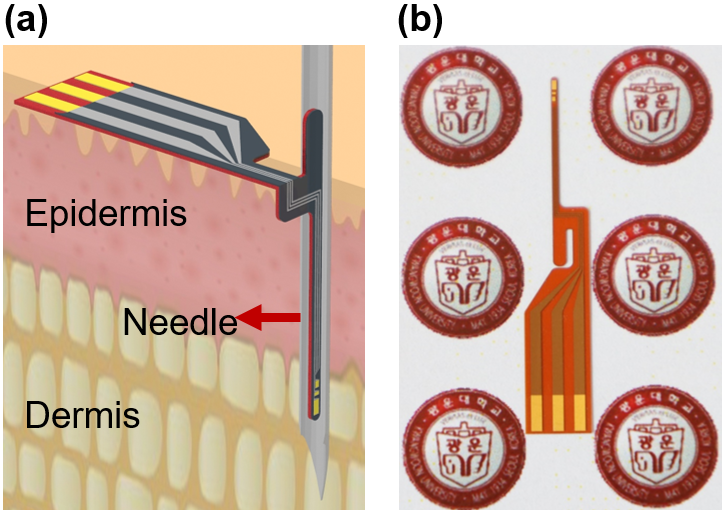
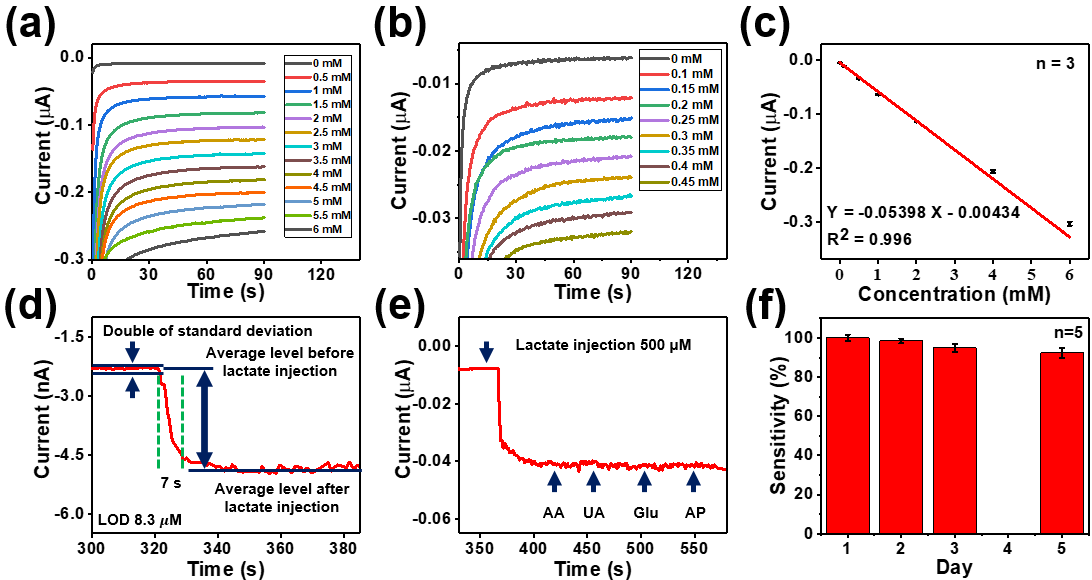
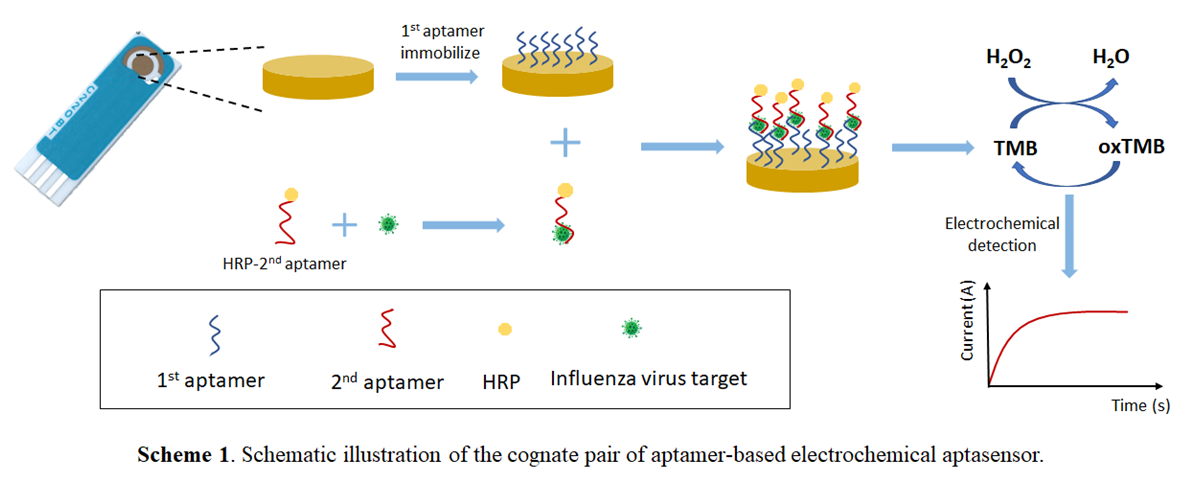
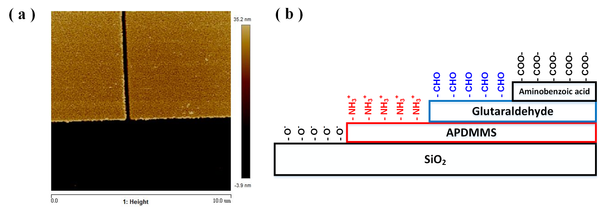






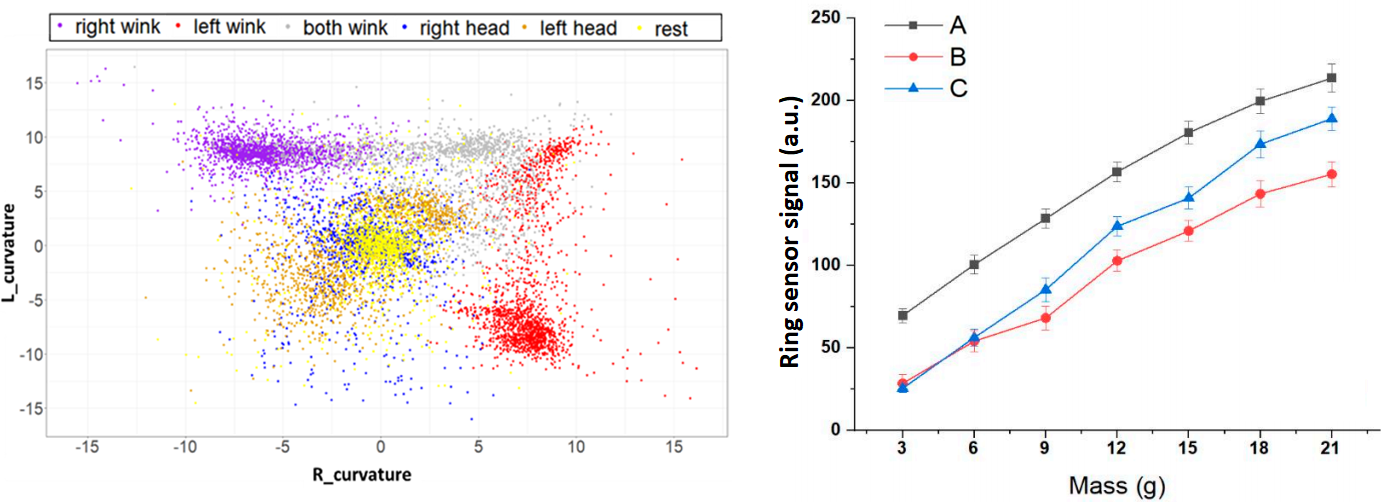
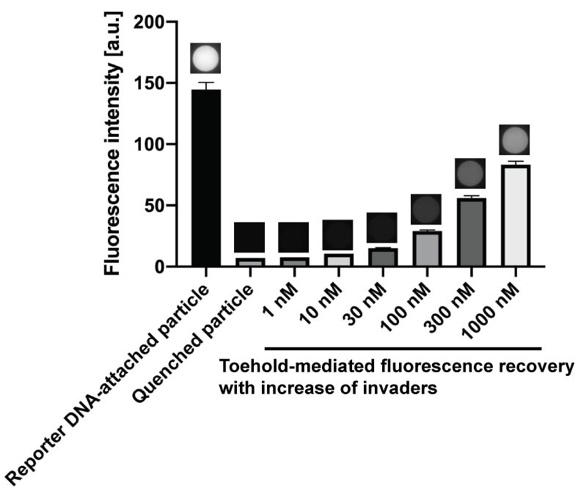 Results: After performing the sandwich assay isothermally at room temperature to capture SNP-containing DNA targets, resultant invader DNAs served effectively as amplified targets. We confirmed that the quenching efficiency between the quencher DNAs and the reporter DNAs immobilized within the hydrogel was over 97%. The recovery of fluorescence from the microparticles increased proportionally with the concentration of the invaders (Figure 1). We also verified the capability of multiplex SNP genotyping without false-positive (non-specific) signals.
Results: After performing the sandwich assay isothermally at room temperature to capture SNP-containing DNA targets, resultant invader DNAs served effectively as amplified targets. We confirmed that the quenching efficiency between the quencher DNAs and the reporter DNAs immobilized within the hydrogel was over 97%. The recovery of fluorescence from the microparticles increased proportionally with the concentration of the invaders (Figure 1). We also verified the capability of multiplex SNP genotyping without false-positive (non-specific) signals.
